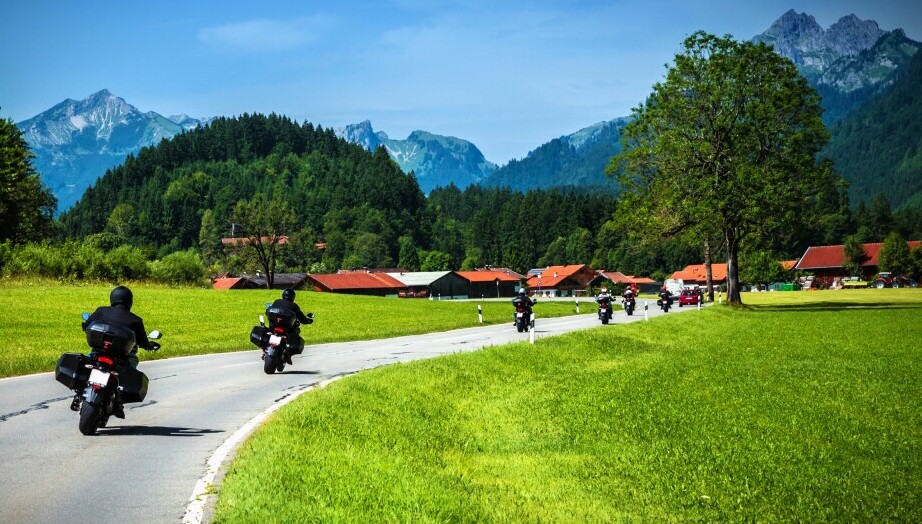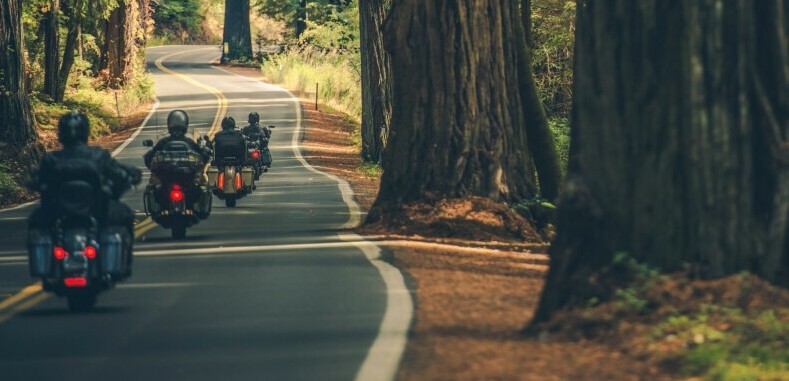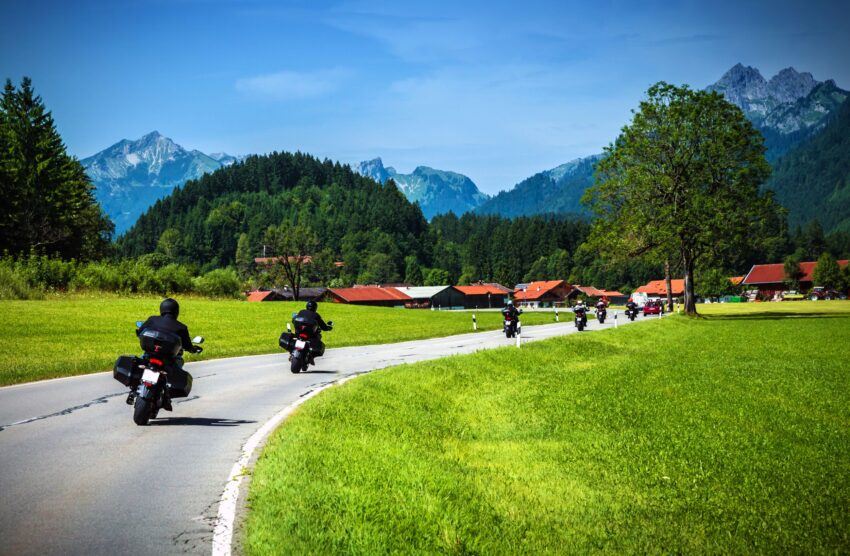Positions within a motorcycle group ride play a crucial role in ensuring safety and coordination among riders. Understanding the different riding positions and their significance can make the difference between a smooth, enjoyable ride and a potentially hazardous one. In this guide, we examine into the importance of group riding formations, highlighting the key aspects of each position to help you navigate group rides with confidence and precision.
Key Takeaways:
- Staggered Formation: When riding in a group, it is crucial to maintain a staggered formation, where each rider occupies a position either to the left or right of the rider in front.
- Single File in Curves: While navigating curves, it is recommended for the group to switch to a single-file formation to ensure each rider has enough space to maneuver safely.
- Communicate Clearly: Communication is key in group riding. Establishing hand signals or using a communication system can help ensure that everyone in the group is aware of the intended maneuvers and any potential hazards.

Fundamentals of Group Riding
A smooth and safe motorcycle group ride requires coordination, communication, and adherence to certain riding positions. This chapter will explore into the crucial elements that form the foundation of group riding.
Importance of Communication
The key to a successful group ride lies in effective communication among riders. Clear communication helps alert others to hazards, upcoming turns, or necessary stops. It allows each rider to anticipate the group’s movements and adjust their position accordingly.
Role of the Lead Rider
One of the most critical positions in a group ride is that of the lead rider. The lead rider sets the pace, navigates the route, and indicates when the group needs to change lanes or make turns. Additionally, the lead rider is responsible for ensuring the group stays together and maintains a safe distance from other vehicles.
One wrong move from the lead rider can have cascading effects on the entire group, potentially leading to confusion or dangerous situations. It is necessary for the lead rider to be experienced, confident, and well-versed in group riding dynamics.
Fundamentals of group riding go beyond individual skills; they encompass a collective understanding of safety, cohesion, and mutual respect among riders. By following these fundamental principles, riders can enhance their group riding experience and ensure a smooth and enjoyable journey for all.
Riding Formations
Staggered Formation
Any motorcycle group rider should be familiar with the staggered formation. In this setup, each rider maintains a distance from the bike in front but aligns themselves in a way that their position forms a staggered pattern with the rest of the group. The lead rider usually takes the left side of the lane, while the following rider maintains a safe distance to the right, and so on. This formation allows for better visibility and reaction time, reducing the chances of a collision within the group.
Side-by-Side Formation
Any riding expert ought to know about the side-by-side formation. In this setup, riders align themselves next to each other, creating a line of bikes moving together. This formation can be tricky as it requires precise coordination and awareness from all riders. While side-by-side riding can promote camaraderie and a sense of togetherness, it can also pose risks as there is limited room for maneuvers in case of unexpected hazards.
With proper communication and experience, side-by-side riding can be enjoyable during group outings. However, it is crucial for riders to maintain discipline and spacing to ensure a safe and enjoyable ride for everyone in the group.
Single-File Formation
To enhance safety during group rides, riders can opt for a single-file formation. In this setup, each rider follows the one in front in a straight line. The single-file formation allows for increased visibility for each rider, making it easier to anticipate and react to changes in the road ahead. It also reduces the chances of bikes drifting into each other’s space.
Formation moving in single fileThe single file is often preferred when riding on narrow or winding roads where space and visibility are limited. This setup promotes a disciplined approach to group riding and ensures that all riders can navigate the route safely and efficiently.

Positioning Within the Group
Lead Rider Positioning
Within a group of riders, the lead rider takes on a crucial role in setting the pace and direction for the group. It is imperative that the lead rider is experienced, knowledgeable of the route, and equipped to handle unexpected road conditions. The lead rider should maintain a consistent speed, signal upcoming turns or hazards, and be prepared to adjust the pace to keep the group together.
Middle Rider Positioning
Riders positioned in the middle of the group play a vital role in maintaining the formation and communication within the group. Being in the middle provides a buffer between the lead rider and the sweep rider, allowing for smoother transitions and ensuring that signals and messages are relayed effectively throughout the group.
For instance, middle riders can help pass along hand signals or messages from the lead rider to those at the back of the group, ensuring that everyone stays informed and rides safely together.
Sweep Rider Positioning
Riders positioned as sweeps at the back of the group have the critical responsibility of ensuring that no member gets left behind. Understanding the group’s dynamics and formations is imperative in this position, as the sweep rider must be vigilant in monitoring the group and communicating any issues to the lead rider.
The sweep rider should keep an eye out for any stragglers, mechanical problems, or sudden changes in traffic conditions, making sure that the group stays cohesive and safe throughout the ride.
Cornering and Turning
Understanding the dynamics of cornering is vital for group riding. Riders should lean their bikes smoothly and gradually, avoid abrupt movements, and maintain a consistent speed through the turn. Good communication and coordination within the group are key to executing safe and precise cornering maneuvers.
To maximize safety during cornering, following riders can benefit from focusing on the path ahead rather than directly following the rider in front. This technique allows for better anticipation of turns and potential obstacles, reducing the risk of sudden braking or swerving.

Highway and Interstate Riding
Unlike city streets, highway and interstate riding require a different approach due to higher speeds and longer stretches of road. It is important for motorcycle group riders to maintain proper positioning, speed management, and exit/entrance strategies for a safe and smooth ride.
Lane Positioning
Lane positioning is crucial when riding on highways and interstates. Group riders should stay in a staggered formation to maximize visibility and safety. The lead rider should take the left position in the lane, while the following riders should stay slightly to the right and back, maintaining a safe distance between bikes. Being visible to other drivers is key in preventing accidents, so make sure to adjust your lane position accordingly based on traffic conditions.
Speed Management
An important aspect of highway and interstate riding is speed management. It is important for group riders to maintain a consistent speed while staying within the legal limits. Consistent speed helps avoid sudden changes that can lead to rear-end collisions or confusion among group members. Always keep a safe following distance between bikes and be prepared to adjust your speed based on road conditions.
The art of speed management lies in finding the right balance between cruising speed and staying safe on the road. Group leaders should set a pace that is comfortable for all members, taking into account the skill levels and experience of riders in the group.
Exit and Entrance Strategies
Entrance and exit strategies are crucial for navigating highway interchanges and ramps as a group. Proper communication and coordination are important to ensure that all riders safely merge onto or off the highway. Group members should use hand signals or intercom systems to alert other riders of upcoming exits or lane changes.
With a well-planned approach to exit and entrance strategies, group riders can navigate complex highway interchanges with ease and confidence. Always be aware of your surroundings and communicate effectively with other members to make the journey smooth and enjoyable.
Urban and City Riding
Keep Group Riding Best Practices in mind when navigating through busy urban environments on your motorcycle. Urban riding requires heightened awareness due to the heavy traffic, pedestrians, and numerous potential hazards.
Traffic Navigation
With Group Riding Best Practices in mind, it is crucial to maintain a safe following distance from the rider in front of you and stay vigilant for sudden stops or lane changes. Make use of hand signals or intercom systems to communicate with your group members to ensure everyone is aware of the intended maneuvers.
Intersections and Turns
An awareness of your surroundings and the group’s movements is crucial when approaching intersections and making turns in the city. Use hand signals or your motorcycle’s turn signals to communicate your intentions clearly to the riders behind you.
It is important to maintain a staggered formation when turning at intersections to allow each rider enough space to navigate the turn safely. Ensure that everyone is aware of the predetermined route to avoid any last-minute confusion or risky maneuvers.
Parking and Stopping
To ensure a smooth parking and stopping process in urban areas, designate a leader who will scout for suitable parking spots and communicate with the group about the chosen location. Utilize proper hand signals and communication to navigate through traffic and find a safe stopping point.
A coordinated approach is crucial when stopping in city environments to avoid any miscommunication or sudden braking. Ensure that everyone in the group is aware of the stopping points and follows the designated leader’s instructions to maintain a safe and organized ride.
To wrap up
Upon reflecting on the intricacies of motorcycle group riding positions, it becomes clear that the safety and coordination of riders are paramount in ensuring a smooth and enjoyable experience on the road. By adhering to proper formation and spacing, maintaining communication, and being aware of the road conditions, riders can enhance their group riding skills and minimize the risks associated with riding in a pack.
Bear in mind, the key to successful group riding lies in practice, communication, and mutual respect among riders. By following the guidelines outlined in this article and continually honing your skills, you can elevate your group riding experience and create lasting memories with your fellow riders. Stay safe, stay aware, and enjoy the journey together on the open road.
FAQ
Q: What are the different group riding positions for motorcycles?
A: Group riding positions for motorcycles include the staggered formation, single file formation, and side-by-side formation. The staggered formation is the most common and preferred formation due to increased safety and visibility.
Q: What is the significance of the staggered formation in group riding?
A: The staggered formation in group riding allows for better visibility of the road ahead, provides space cushioning between riders for maneuverability and reaction time, and helps prevent collisions in case of sudden stops or obstacles.
Q: How should riders communicate and ensure safety during group rides?
A: Riders should use hand signals, intercom systems, or designated lead and sweep riders to communicate effectively during group rides. It is crucial to maintain a safe following distance, adhere to traffic laws, and ride responsibly to ensure the safety of all riders in the group.
